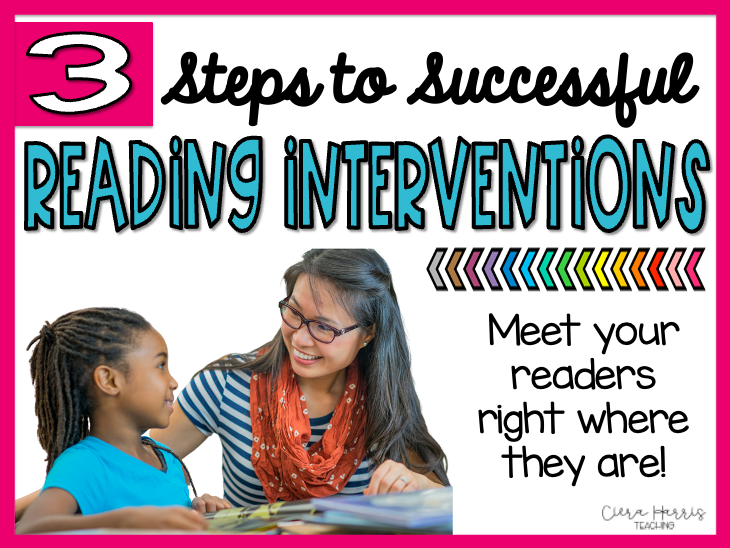Teachers know that to comprehend a text, many elements need to line up. Fluency is one of those elements! If a student’s fluency is lacking, it can directly impact their ability to understand what they are reading. So does this mean that students who struggle to decode can’t learn how to comprehend? Not at all! Let’s chat about some strategies we can use to help teach comprehension to those students who struggle with fluency.

Want to watch the video instead? Check it out below! Make sure to subscribe to get updates on all new content!
Educators need to understand that reading fluency is a vehicle for reading comprehension. The focus of speed during reading should NOT be emphasized. The ultimate goal of reading is to make meaning and comprehend what was read, not how fast it was read.
My comprehension expectations for my students were the same regardless of their ability to read fluently. Why? Because reading is all about thinking. Slow readers can still be exceptional thinkers! Even if they can’t read a BIT of the text, I can still teach them to listen and think and use every skill I teach them just like the rest of the class. And when I took the time to explain this to some of my ‘slower’ readers and showed them the power they have as readers and pushing their thinking, they took off! That upped their confidence tenfold! So instead of teaching fluency separately from comprehension because those students ‘need’ it, I focused on strategies that supported both to keep the expectations high for everyone.
When their fluency does increase and you notice that they are unable to remember what they read, make sure to snag some of these other awesome strategies instead!
Fluency Strategy #1: Use Reasonable Accuracy
Even as adults, our accuracy isn’t 100%. There are words we change that don’t impact comprehension and that works for us! We are not 100% accurate all of the time. So we need to have an understanding of what reasonable accuracy is for these students so we are not nickel and diming them every time they read. Let them read, let them get words wrong. Only stop them when it’s going to be a meaningful stopping point or a stopping point that’s going to impact their comprehension. The more we stop them to more we are hindering their comprehension.
We need to be aware of what fluency goals the student has and where are there opportunities to work on those goals when we read. If I understand this, then our stopping points to decode for fluency will be more meaningful. Otherwise, just tell them the word and move on!
The point is, I’m not stopping and helping with every word and they are not stopping and decoding every word. What we do instead, is focus on their fluency goals, and with the rest of the words, I tell them the word and we move on to get through the passage quicker to be able to focus on comprehension. Because I understand reasonable accuracy, I can give students a more focused experience for fluency and a better experience for comprehension.
Fluency Strategy #2: Think About the Goal/Objective
When you are teaching a reading comprehension lesson, think about the objective at hand. If you’re teaching a ‘making inferences’ lesson in a small group and you have students who struggle with fluency, what are you trying to do in that lesson? Is it quickly going to turn into a fluency lesson or will you focus on teaching inferences?
Remember what I said before, slow readers can be exceptional thinkers. So for this lesson, is it okay if I read the text to them? Absolutely! The objective of my lesson is to teach them how to THINK and make inferences. They can do this with listening comprehension and be able to completely master the objective even if fluency is a struggle. My goal in this lesson isn’t for us to struggle, it’s to make inferences! That’s our goal! 
Then when the students are reading independently and they stumble upon a part in the text where they have to make an inference, they are going to be able to! The transfer of skills will be much more smooth because we are still teaching them to think despite their decoding inabilities.
Fluency Strategy #3: It’s All About the Text
For the students who do struggle with fluency, keep them text short. It should be somewhere between 50-200 words. This is where leveled passages come in handy! It takes just 5-7 minutes to retype a quick passage into a functional passage to help with fluency for those students. This allows them to be a part of the lesson without having to struggle through a lengthy passage where fluency becomes an issue, blocking out comprehension as the focus.
Also, re-use texts you’ve previously read! We know in primary grades that rereading texts works great for improving fluency. Why don’t we do this more often? If I have a fantastic passage that I used two weeks ago for Main Idea/Details, then guess what? I’m going to use that same passage two weeks from now for text structure. Y0ou can analyze a text with multiple lenses. Yes, we’ve read this, but we had our Main Idea glasses on. Now we’re going to analyze it with our Text Structure glasses on. This overlapping fluency with meaningful comprehension!
Fluency Strategy #4: Pre-Teach Vocabulary Words
You can do this in two ways. One way is for the teacher to pre-select words from the text that we know our students might have trouble decoding. It doesn’t necessarily mean it’s a vocabulary word or a word that they don’t ‘know’. Think more on the decoding side. Present those words ahead of time and practice decoding those words with your students. Then when you give them their passage, they can easily remember or decode them and move on, keeping the focus on comprehending what they are reading.
Another way you can do this is to have your students identify the words. Take 60 seconds before beginning your comprehension lesson and have students go through the passage and find 4-5 words that they don’t know how to say or decode. Then we do a quick pair-share and see if we can help each other decode words. Or we do a quick shout out and write them on the board and practice decoding or chunking the word. I can create a very quick, student-driven fluency lesson with no prep before jumping into our comprehension lesson.
Fluency Strategy #5: Preview the Text
I don’t do this with all of my students but those who need the fluency work, this is a fun way to get some extra word work in before your lesson. Have them take time to look through the title, illustrations, text features, headings, etc. One of the games I love to play with the students is to have them predict words they think they might find in the story. This works a little better with nonfiction than it does with fiction. For example, maybe they are reading a book all about dogs.
Together we come up with a list of words like a collar, bark, puppies, snout, etc. (Have a list pre-prepared to help guide students). Each word predicted is written down and read out loud. All of these words become potential words in the story therefore we are aiding in their fluency.
Hopefully, many of the fluency strategies I shared above will help you! I know we all have students whose weaknesses are fluency, but that doesn’t mean that comprehension has to take a back seat. Teach them how to think! Focus on strategies such as making predictions, using schema, visualization, and asking questions. Then when fluency picks up, they won’t be behind!
If you love this post and want to save it for later, make sure to use the pin below!






